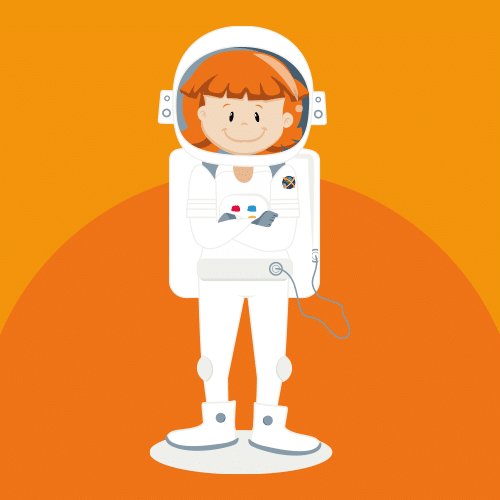Microbial Box 2: What’s in your Petri?
Your Mission: Sample, grow, and investigate the microorganisms around us.
- formulate and prepare an inquiry-based investigation
- grow and study microbial life
- categorize microbes based on different properties
- think critically
- investigate the relationship of everyday products to microorganisms
- examine the impact of microorganisms on daily life
- discover that microorganisms have the greatest diversity of all living organisms
- explain how microorganisms are beneficial to humans and the environment
- connect healthy living habits from living in space to their schools and homes
- Per class:
- Clear adhesive tape
- Thermometer
- Small desk lamp or light (15–60 watt)
- Small container (such as medicine cup or cough syrup container)
- Anti-bacterial soap
- Incubator, using a hard-sided cooler OR a 10-gallon glass aquarium with heavy weight plastic (laminating plastic) and packing tape (See how to make a classroom incubator and determine other needed materials in Part 2’s pre-lesson instructions section and in Appendix B)
- Per group (4 students per group):
- 2 plastic cups
- ½-cup distilled water
- 2 permanent markers
- ½-cup weak bleach
- solution
- One 1-gallon zipper seal bag (to use at 48-hour observation period)
- Color pencils
- Per student:
- 1 Petri dish (with nutrient agar)
- 1 hand lens
- 1 cotton swab
- Eye protection
- Hand protection
- Copy of What’s in your Petri? Student Section
Explore more Mission X activities!
Your mission: Learn the basics of martial arts (karate) to defend yourself against simple attacks and, in case of emergency, …
Your Mission: Perform an activity that blends together squats, pushups, and jumping in the air (burpees) to promote muscular strength, …
In microgravity, astronauts love to perform spectacular somersaults. Here on Earth it’s not so easy, but it certainly is fun! …
Your Mission: Investigate the relationship between microorganisms and many every day products. Microbes live everywhere, including outer space! Scientists have …
Let’s HIIT the space gym and get ready to sweat! To keep those hearts and lungs healthy, perform a series …
You have just had a great day of exploring the Moon, but it’s time to head back to the base …
Astronauts need brains and brawn! Using your coordination, endurance and quick thinking, perform five jumping jacks, with a star-jump finish, …
Your Mission: Perform jump training with a rope to improve strength and endurance. On Earth, humans experience the effects of …
Venus is the most volcanic planet in our solar system and recent research suggests some of these volcanoes are still …
Join ESA astronaut, Samantha Cristoforetti and Jaime from Cosmic Kids on a brand new adventure… Yoga in Space! Follow along …










